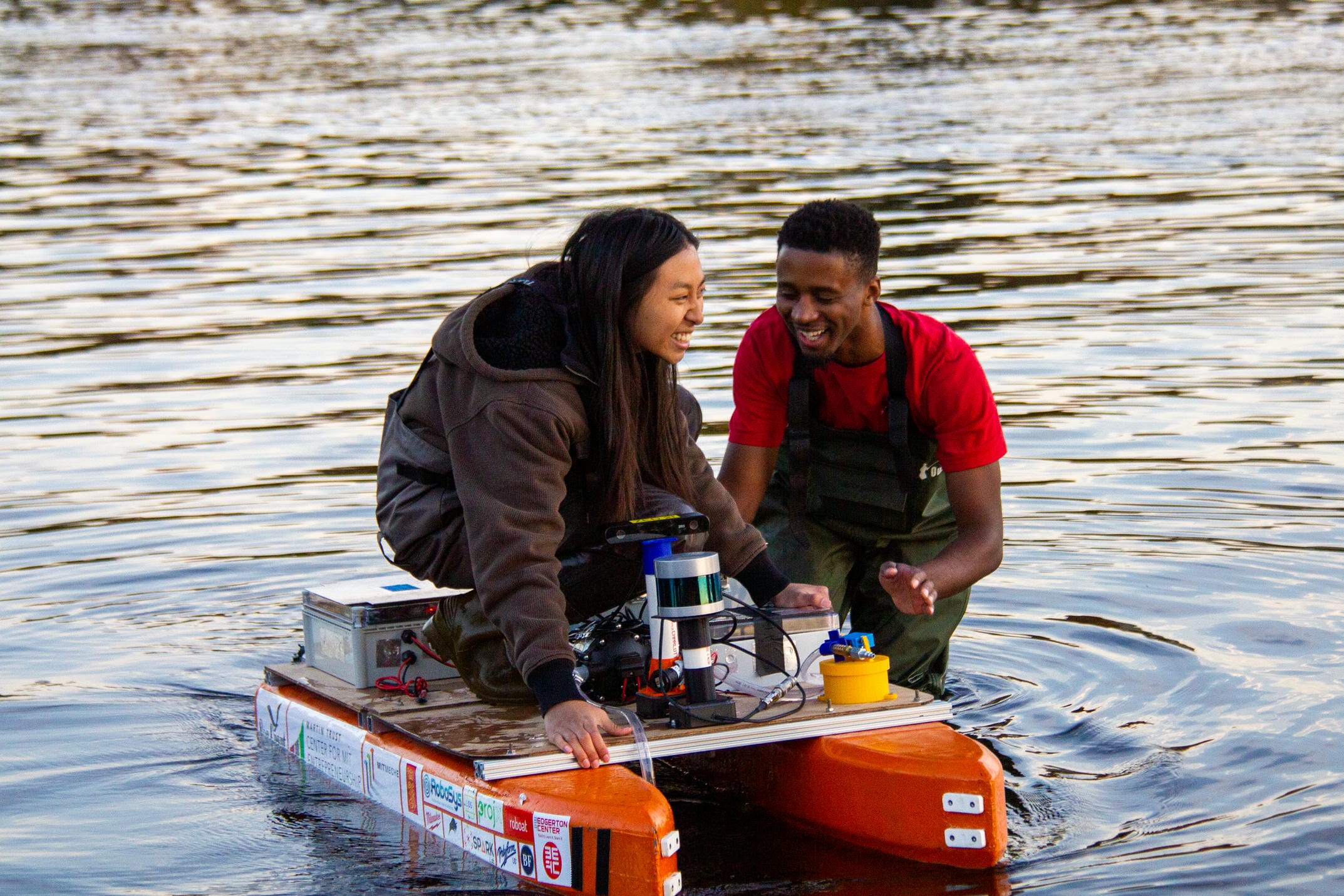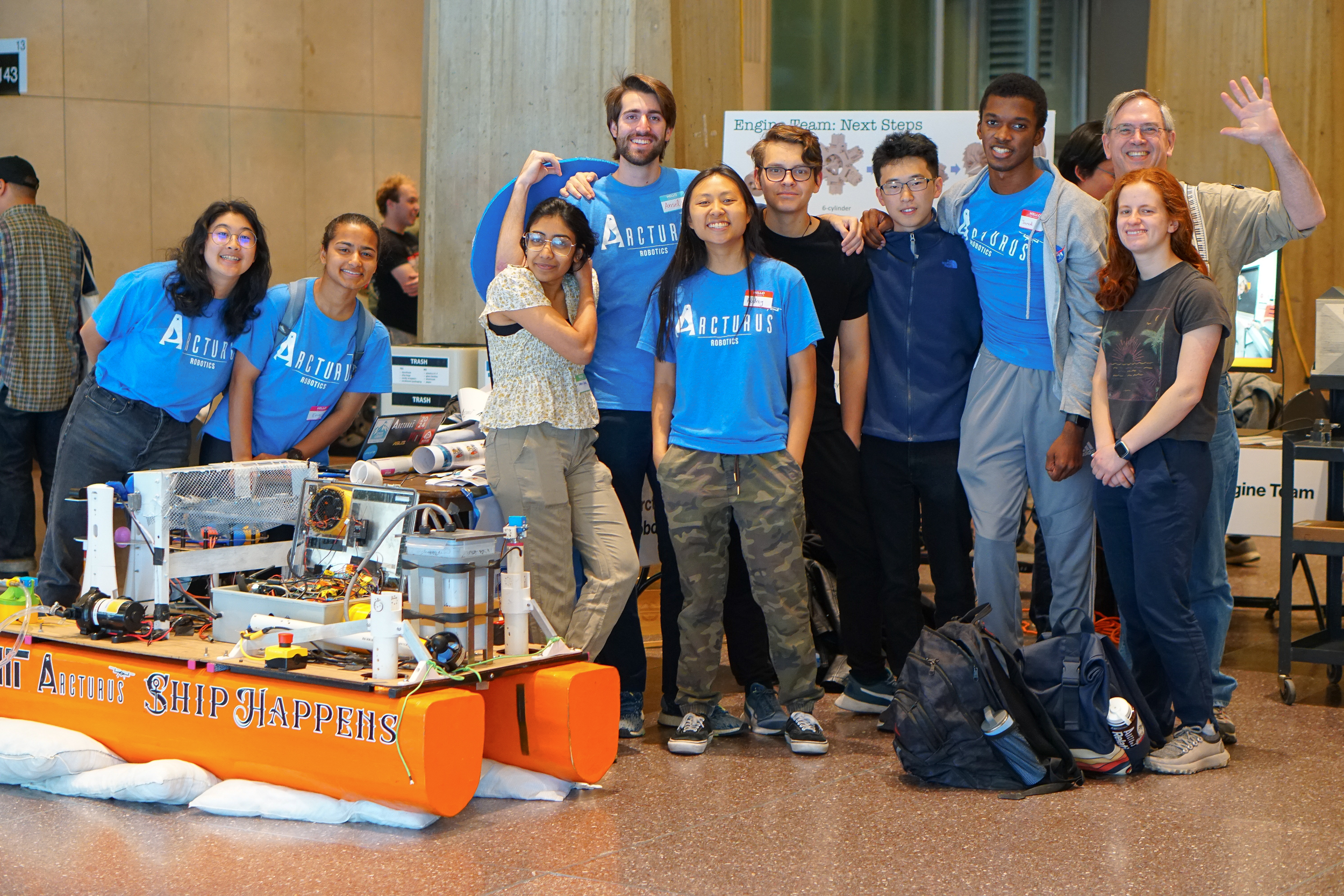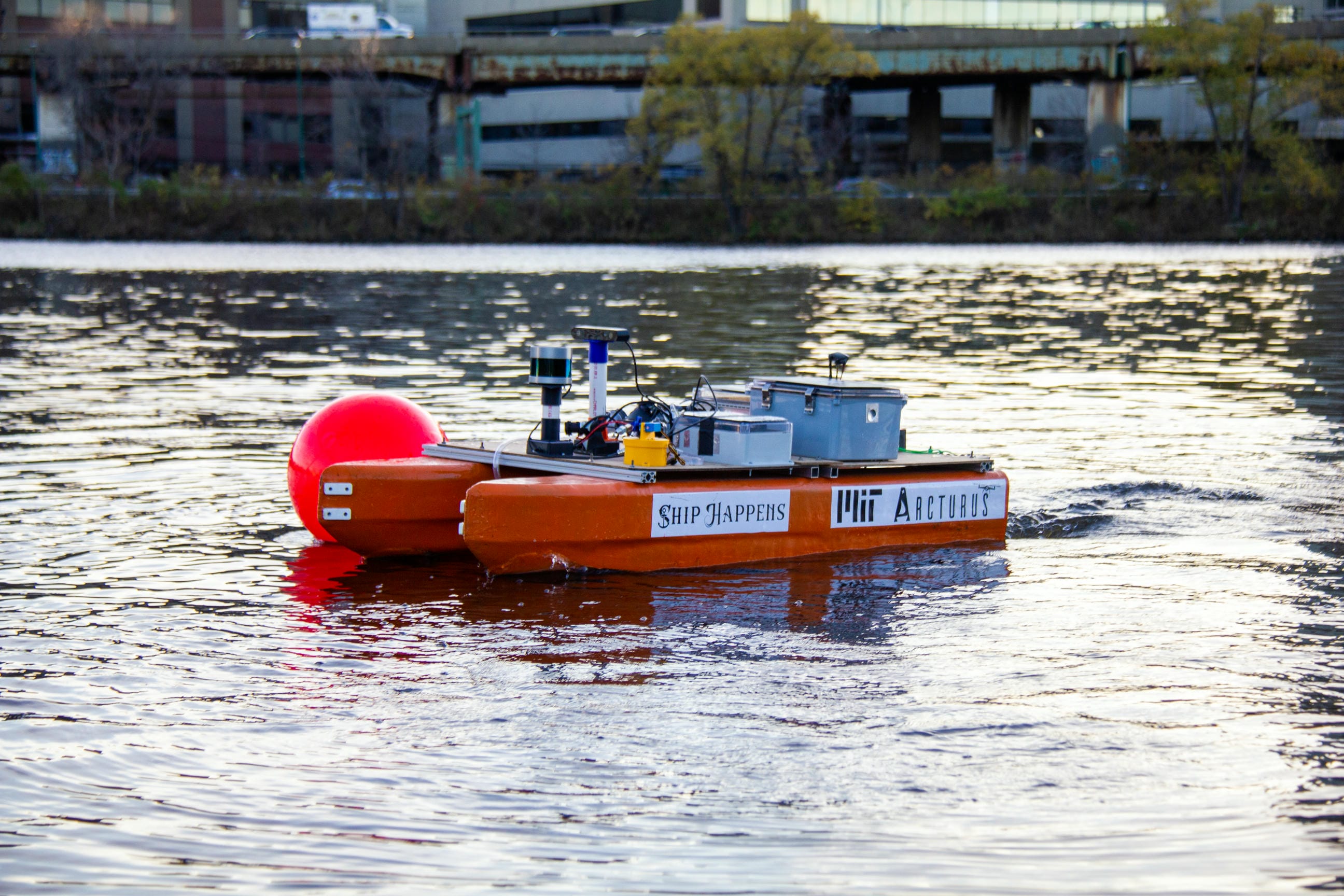MIT Arcturus Autonomous Robotics
- CategoryClub
- Project dateFall 2022 - December 2024
- Skills usedProject management, system integration, financial management, design, manufacturing, CAD
- Visit Website
About this
Arcturus is MIT’s autonomous marine robotics team. I founded Arcturus during my sophomore year in 2022, and it’s been a wonderful journey growing with the team. We've grown rapidly, tripling in size to around 60 members in the last year. Our mission is to:
- Give undergraduates hands-on experience leading teams and applying their knowledge by building and programming autonomous vehicles.
- Share our love of robots with the community through a series of outreach events including lab tours, demos, classes, and mentorship.
- Create technology that we believe will positively impact the environment and coastal communities.
Arcturus competes in two international competitions: the Njord Challenge in Trondheim, Norway, and RoboBoat, in Sarasota, Florida. Our two autonomous surface vessels are Ship Happens (our 6'-long orange competition vehicle) and Athena (a 3'-long yellow catamaran we use for small-scale testing of our autonomy).
Our autonomy stack runs on ROS2, which allows our stack to be modular and hardware-agnostic (as in, our autonomy can be applied onto any boat with similar hardware and make it autonomous). Our hulls are a composite of fiberglass and epoxy resin overlaid on top of CNC-milled foamboard. For propulsion, we currently utilize skid-steering using custom-made azimuth thrusters which enable the thrusters to rotate in place independently, but this season, we will be implementing a quad-thruster propulsion system to improve maneuverability and stationkeeping.
If you'd like a system overview of our hardware and software stack for each competition, please see our technical report for RoboBoat 2023 and Njord Challenge 2023. If you'd like to read our most recent blog updates, please visit our website!
Part of MIT Arcturus’ mission is to share our technology with the MIT and Boston/Cambridge community through outreach programs. Because we often showcase our work at MIT, it’s very common for us to meet both those who have never heard about autonomy and people who have been studying for autonomy for most of their life in the same afternoon, so we work hard to cater to all levels of background knowledge during our outreach events.
We mentor high school FTC and FRC teams, give tours of the MIT Sea Grant lab to the public, and run events at festivals, museums, and conferences. Over the course of the year, we reach hundreds of students, parents, academics, industry professionals, and curious community members!
One of our most popular programs are our Sea Perches, underwater remotely operated vehicles made from PVC. We have held several battlebots events with everyone from middle schoolers to incoming MIT freshmen, challenging them to compete head-to-head in the Sea Perch Olympics. In this game, students are tasked with pushing rubber ducks and sinkers into their opponent's "endzone" and popping their opponent's balloons to maximize the number of points they get before time runs out!









